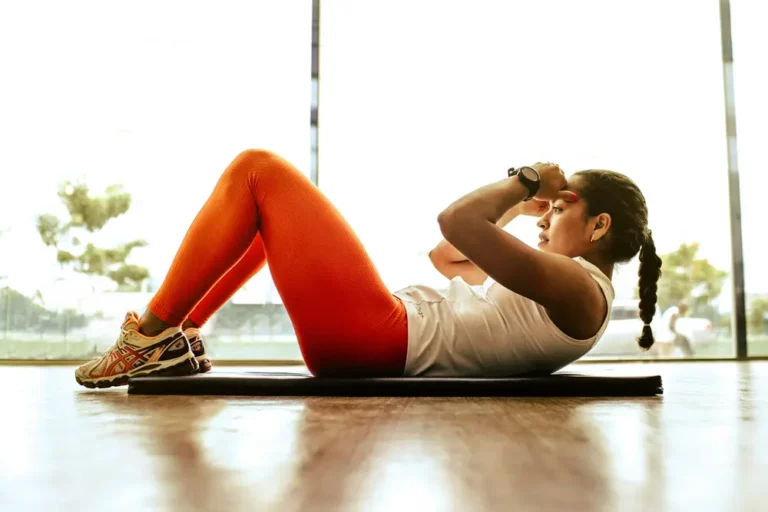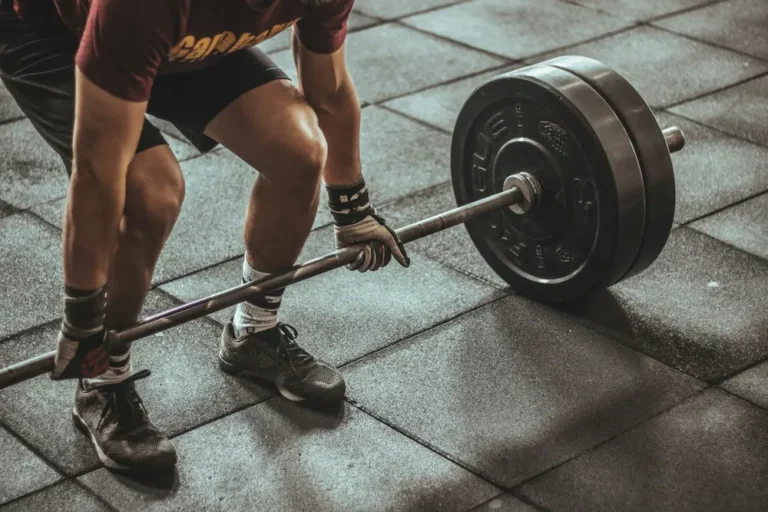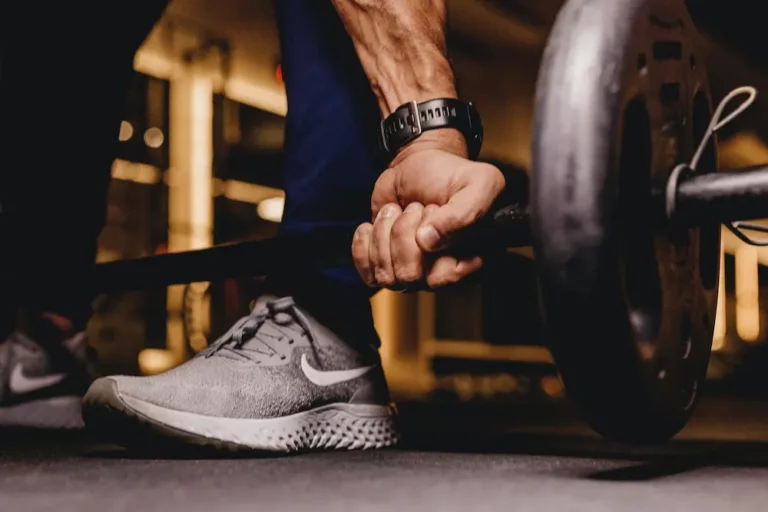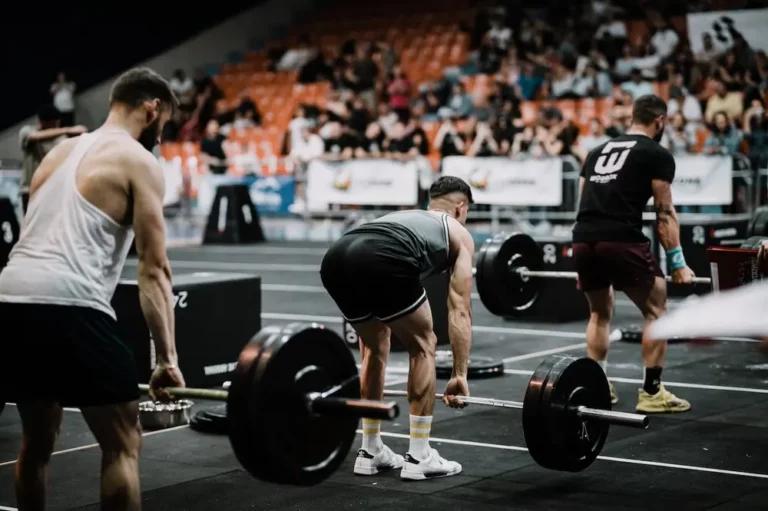Why Is One Bicep Bigger Than the Other? Fixes & Tips
There is one thing that many of us in the gym world might have noticed but not often talked about – having one bicep bigger than the other. It’s pretty common, actually, and more interesting than you might think! Whether you’re a gym enthusiast or just someone curious about how our bodies work, understanding this quirky aspect of our physique can be both enlightening and fun.
So, let’s dive in and explore why our biceps might not always be a matching pair and what it says about our bodies and our habits. Get ready for a fascinating journey into the world of muscle asymmetry!
Understanding Asymmetrical Muscle Development
When I first embarked on my fitness journey, the mystery of one bicep being bigger than the other truly puzzled me. But as I delved deeper, I realized that this phenomenon, known as asymmetrical muscle development, is actually quite common. So, let’s dig into the causes and understand the anatomy and functionality of our biceps to make sense of it all.
Exploring the Causes of Uneven Bicep Size
Several factors contribute to the uneven development of biceps, and understanding these can help in addressing the symmetry:
- Hand Dominance: It’s natural to favor one hand over the other for most activities, which can lead to the dominant arm being more developed.
- Repetitive Motions: Carrying bags, typing, or even holding a child with one arm more than the other can affect bicep size.
- Injury or Surgery: Any past injury or surgery that restricts movement can lead to muscle atrophy in one arm.
- Training Habits: Focusing too much on one arm during exercise or not maintaining proper form can cause imbalances.
- Genetics and Blood Flow: Some folks might be genetically predisposed to have one bicep larger than the other, or natural hand dominance could lead to greater blood flow and stimulus-response in one bicep.
Anatomy and Functionality of Biceps
The biceps brachii, often simply referred to as the biceps, is a fascinating muscle group. It’s a two-headed skeletal muscle that plays a crucial role in the movement of the forearm and shoulder. Here’s a breakdown of its anatomy and functionality:
- Origin and Insertion: The biceps attach to the scapula (shoulder blade) and insert into the radius bone of the forearm.
- Functions: These muscles are primarily responsible for forearm supination (rotating the palm upward) and elbow flexion (bending the elbow). Additionally, the long head of the bicep also assists in shoulder flexion due to its attachment at the top of the glenohumeral joint.
Despite their visual appeal and prominence in popular culture, the biceps are relatively small muscles. They’re involved in many upper body exercises, even those we don’t typically associate with biceps training. Every time you pull, bend your elbow or perform a back exercise, you’re engaging your biceps. This extensive involvement, especially on upper body pull days, means it’s quite easy to inadvertently overtrain them, contributing further to muscle asymmetry.
By recognizing the intricate combination of causes, from genetics to lifestyle and training habits, I’ve learned to better approach my training regimen. Understanding the anatomy has also been a game-changer, helping me to appreciate the complex functions of the biceps beyond just their appearance.
Identifying and Assessing Bicep Imbalance
Methods to Measure Bicep Size Discrepancy
Often, the first step in dealing with one bicep being larger than the other is identifying and measuring the discrepancy. When I started noticing a difference in my bicep sizes, I took a proactive approach. Measuring the circumference of each bicep without flexing provided me with concrete numbers to work with. I wrapped a soft tape measure around the thickest part of both my biceps and recorded the measurements. It’s a straightforward method that anyone can do at home.
Additionally, I found visual examination in the mirror to be useful. Positioning myself in front of a mirror and comparing both arms from various angles helped me see the difference in muscle size. Sometimes, it’s not just about the numbers but also how the imbalance appears visually. For those uncertain about their observations, taking photos from different angles can provide a clearer perspective over time.
Recognizing Signs of Muscle Imbalance
Beyond measurements and visual checks, there are practical tests to assess muscle strength imbalance. I tried performing alternating bicep curls with dumbbells of equal weight to test my biceps’ endurance and strength. It became evident that one arm could outlast the other, indicating a muscle imbalance needing attention.
Pain or discomfort accompanying muscle asymmetry is another red flag I learned about. If these symptoms are present, it might signal an underlying issue that’s more serious. Sudden changes in muscle size are particularly concerning and warrant immediate professional advice.
I also became aware of how everyday habits contributed to this imbalance. Consistently sleeping on one side or carrying heavy loads on a preferred arm impacts muscle development over time. It was an eye-opening realization that correcting my bicep size discrepancy would also include tweaking my daily routines.
Understanding these signs and methods has been crucial in my approach to addressing and managing bicep imbalance. It’s not just about aesthetics but ensuring both my arms have balanced strength and functionality for overall fitness and well-being.
Factors Contributing to Uneven Biceps
Having one bicep bigger than the other can be quite perplexing. I’ve found that several factors contribute to this asymmetry, affecting both seasoned athletes and fitness newcomers alike. Let’s dive into the specifics.
Impact of Dominant Hand Usage
It’s fascinating how our daily behaviors shape our bodies. For me, the realization hit home that my dominant hand has been getting a natural workout every day. Whether I’m grabbing a coffee cup, typing away on my keyboard, or carrying groceries, my dominant arm is constantly engaged. This additional, albeit subtle, workout can lead to significant differences in muscle size and strength over time. It’s not just about the actions themselves but the consistency of these actions day in and day out that contributes to uneven development.
Influence of Workout Techniques and Habits
My journey in the gym has taught me that how we train matters just as much as how often. Uneven biceps can also stem from imbalanced workout routines or incorrect form. For instance, performing exercises that simultaneously engage both biceps might lead to the stronger arm compensating for the weaker one. This imbalance is particularly prevalent in compound movements and exercises where body mechanics and form cues are crucial but often overlooked by novices. I’ve learned the hard way that focusing on form and technique and occasionally isolating each arm for an equal workout can make a big difference.
Role of Genetics and Natural Body Structure
Sometimes, the cards we’re dealt from birth play a significant role in our fitness journey. I’ve come to understand that genetics and our natural body structure can influence muscle development, including the asymmetry between biceps. For some, a genetic predisposition might mean their muscles don’t develop symmetrically, regardless of their training intensity or technique. Recognizing that genetics can be a contributing factor helps me adapt my workouts to address and mitigate these natural tendencies as much as possible.
Corrective Exercises and Training Approaches
Discovering that one bicep is bigger than the other can be a jarring realization. Knowing how to address this discrepancy through exercises and training modifications is crucial for both aesthetics and function. As I explore various corrective techniques and adjustments, I’ll share insights into creating a more balanced muscular build.
Techniques for Balanced Bicep Training
First off, understanding the root causes of the imbalance allows for more targeted interventions. It’s not just about the exercises; it’s how they are performed. Focusing on form and technique plays a pivotal role in correcting imbalances. By ensuring that each bicep is engaged equally during workouts, the smaller or weaker bicep has the opportunity to catch up. This might mean slowing down the repetitions or reducing the weight initially to maintain a focus on proper form.
Make sure that even when you are performing other exercises, you pay close attention to how you are feeling after, as you may experience some pain after bench press or even doing cardiovascular exercises.
Incorporating Unilateral Exercises
Unilateral exercises are my go-to for correcting imbalances between any muscle groups, biceps included. By isolating each arm during the workout, I can ensure that both biceps receive equal attention and effort. It’s beneficial to start with the weaker or smaller bicep, as this sets the stage for the workout intensity both sides will experience. Exercises like one-arm dumbbell curls, preacher curls, and hammer curls have been incredibly valuable. Here’s a quick table summarizing a typical unilateral bicep routine:
| Exercise | Sets | Reps |
|---|---|---|
| One-Arm Dumbbell Curl | 3 | 10 |
| One-Arm Cable Biceps Curl | 3 | 10 |
| Preacher Curl (Single Arm) | 3 | 10 |
| Hammer Curl (Single Arm) | 3 | 10 |
Adjusting Grip and Posture During Workouts
Correcting grip and posture during exercises can significantly influence muscle engagement and development. For instance, I’ve found that simply by adjusting my grip – be it more closely or wider than usual, or even just altering the angle of my wrists – I can activate different parts of my biceps more effectively.
Moreover, maintaining proper posture during my workouts is essential. Engaging my core, aligning my spine, and ensuring that I’m not compensating with my back or shoulders helps to isolate my biceps better. Training in front of a mirror has been a helpful strategy for me to keep an eye on my form throughout each movement. This kind of immediate feedback is invaluable in making real-time adjustments for better symmetry and muscle development.
In choppy waters like these, it’s crucial to remember patience and consistency are key. Muscle imbalances didn’t appear overnight and won’t disappear that way either. However, with the right approaches and a dedicated mindset, achieving balanced biceps is within reach.
Role of Recovery and Rehabilitation
Importance of Rest and Muscle Recovery
When I’m training hard, it’s easy to overlook one of the most fundamental aspects of muscle growth and symmetry: rest and muscle recovery. I’ve learned that giving my body enough downtime isn’t just a luxury; it’s a crucial part of the process. After an intense biceps workout, my muscles need time to repair themselves, and this is when the growth happens. When one bicep is lagging behind the other, I’ve found that it might not only be due to the amount of work I’m putting in but also because I’m not giving it enough time to recover.
Muscle recovery involves more than just time off from training; it also includes proper sleep, hydration, and nutrition. I aim for at least 7 to 9 hours of sleep each night, drink plenty of water throughout the day, and focus on a balanced diet rich in protein, carbs, and healthy fats. These steps ensure my muscles have all they need to repair and grow stronger, helping to correct any imbalances between my biceps. Furthermore, strategic rest days mean I avoid overtraining, which could exacerbate the size difference between my arms.
Addressing Underlying Injuries or Strains
In my journey towards achieving symmetrical biceps, I’ve also learned the importance of paying attention to any underlying injuries or strains. Early in my training days, I ignored a minor strain in my right bicep, thinking it was something I could “work through.” That decision not only delayed the recovery of the injured muscle but also contributed to a noticeable size difference between my arms.
Injuries or even minor strains can significantly impact muscle development. An injured muscle can’t perform optimally, leading to reduced gains or, in worse cases, muscle atrophy from lack of use. When I first noticed the size discrepancy and the strain’s lingering effects, I knew I had to address it head-on.
Consulting with a physical therapist was a game-changer for me. They helped me understand the extent of the strain and provided a customized rehabilitation plan that included targeted exercises, stretches, and sometimes rest. Rehabilitation exercises helped improve my range of motion and strength, gradually bringing my smaller bicep up to par with the other.
Monitoring and Adjusting Fitness Routines
Regular Assessment of Muscle Development
I’ve found that one of the keys to tackling the issue of one bicep being bigger than the other is regular assessment. Identifying discrepancies early on makes it easier to correct them before they become too pronounced. Measuring the circumference of each bicep every few weeks has been a go-to method for me. But it’s not just about the tape measure; it’s crucial to pay attention to strength levels as well. I often compare how much weight each arm can lift or the number of repetitions they can perform. This dual approach allows me to gauge both size and strength.
Another technique I swear by is visual assessment. Standing in front of the mirror during exercises, I watch out for any form of compensation. It’s fascinating how the body attempts to balance out imbalances by shifting workload in subtle ways. Observing these can be quite telling.
Tailoring Workouts to Address Imbalances
After pinpointing where the imbalances lie, tailoring my workouts became essential. I didn’t shy away from giving my nondominant arm some extra attention. Incorporating unilateral exercises became a cornerstone of my routine, specifically targeting the weaker bicep. Exercises like one-arm preacher curls and concentration curls allowed me to focus intensely on the muscles that needed it most.
To ensure effectiveness, I adopted a strategic approach to these exercises. Here’s an example of a modified workout plan I used:
| Exercise | Sets | Repetitions |
|---|---|---|
| One-Arm Dumbbell Curl | 3 | 10 |
| One-Arm Cable Biceps Curl | 3 | 10 |
| Preacher Curl | 3 | 10 |
| Hammer Curl | 3 | 10 |
In addition to unilateral workouts, balancing the overall volume between both arms became a priority. I made it a point to check that each side was doing an equal amount of work, both in terms of weight and repetitions. It wasn’t just about correcting the size difference but also ensuring both biceps were gaining strength proportionately.
Adjustments didn’t happen overnight, and it was a process of trial and error. Listening to my body and making modifications based on how things were progressing proved to be invaluable. By adopting this meticulous approach to monitoring and adjusting my fitness routines, I’ve made significant strides in addressing the imbalance.
Conclusion
I’ve covered a lot about why one bicep might be bigger than the other and the steps you can take to address this imbalance. It’s clear that with the right approach and dedication, achieving symmetrical muscle growth is within reach. Remember, it’s not just about the aesthetics; it’s about your overall health and ensuring your body functions optimally. So don’t shy away from seeking out that professional advice or tweaking your workout routine. Your body will thank you in the long run. And who knows? You might just fall in love with the process of fine-tuning your training to get both those biceps looking equally impressive. Here’s to a balanced and stronger you!
FAQ – Frequently Asked Questions
How long does it take to even out the size of biceps?
The time it takes to balance bicep sizes varies depending on the initial difference, your workout routine, and individual growth rates. Consistency in targeted exercises is key, and changes can be seen over several weeks or months.
Does having uneven biceps affect my strength or fitness levels?
Slight asymmetry in bicep size usually doesn’t significantly impact overall strength or fitness. However, if there’s a large discrepancy, it might indicate a strength imbalance which could affect performance in certain activities.







